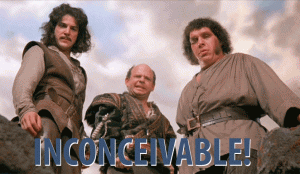A 30-Year Reunion

1987 was a formative year. It brought us timeless movies like Dirty Dancing and the Princess Bride; Whitney Houston sang about wanting to dance with somebody and Aretha Franklin was the first woman to be inducted in the Rock and Roll Hall of Fame; and Bart Simpson made his first appearance on the Tracey Ullman show.
It was also the year that the FDA approved AZT as the first available treatment for HIV and AIDS. Randy Shilts also published the book And the Band Played On: Politics, People, and the AIDS Epidemic, exploring the history of the HIV/AIDS epidemic in America, with a focus on how leaders reacted to the crisis.
But how was philanthropy reacting? Just a few years prior, a group of funders began to meet to strategize how to take bold action, pushing philanthropy — and through philanthropic leadership, the government — to respond to the growing AIDS crisis in the US. That group, which incorporated to become Funders Concerned About AIDS in 1987, would grow in membership, helping to mobilize resources to fight the epidemic, first nationally and then globally.
Even as we commemorate the past three decades of progress, we must also reignite our fighting spirit. And that is exactly what FCAA is preparing to do in just a few weeks, at our Annual Philanthropic AIDS Summit. Because, despite how far we have come, we still face daunting challenges: the new administration’s lack of concern regarding HIV and AIDS; emboldened extremists threatening to further isolate key affected populations; and flat lining funding, which will make it much more difficult to scale up services.
It is against this backdrop that we will gather on September 18 and 19th. Consider it a 30-year class reunion of sorts; an opportunity to find inspiration in the efforts of those who have done this work over the last three decades. It is a chance to consider how far we’ve come and remind ourselves what we are capable of as a community.
It is also a particularly well-suited platform at which to discuss some of these critical challenges:
- The U.S. South which, though the epicenter of the epidemic in the US, receives less than 20% of total HIV-related philanthropy for the country. How can we better fund the fight against HIV and AIDS in the U.S. South?
- Adolescent girls and young women, who particularly in sub-Saharan Africa, continue to be disproportionately affected by the epidemic. How do we put this population at the center of the HIV response?
- Older adults, who currently account for 50% of all persons living with HIV. This number will increase to 70% by 2020 and 80% by 2025. What are the steps we need to take to properly address the challenges of aging with HIV?
The Summit will also be an opportunity to hone skills and advance knowledge in sessions that:
- Highlight the critical role of advocacy in fighting the battles that will inevitably face our community in the coming months and years;
- Explore the history, role and importance of networks of People Living with HIV in combatting stigma and reducing HIV transmission; and
- Discuss the role of community-based organizations in the fight and how best to support them.
With all of these necessary and timely conversations taking place, arguably the most important function of this year’s Summit is ensuring we recommit to our objectives and re-energize one another for the work ahead. There is no doubt the times are more challenging than we imagined they would be in 2017. But, we didn’t back down 30 years ago, and we certainly won’t do it now.
Please help us #ReigniteTheFight by registering for the Annual AIDS Philanthropy Summit today.